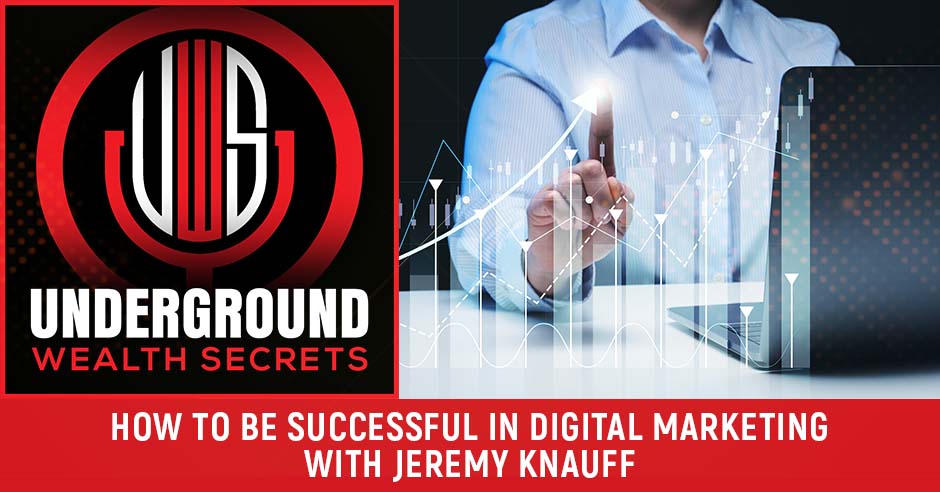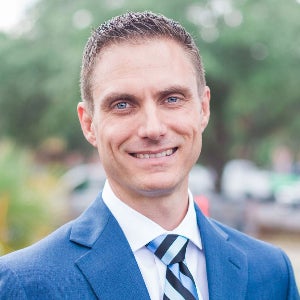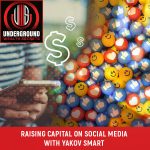How To Be Successful In Digital Marketing With Jeremy Knauff
- Post author By rldiamond
- Post date September 1, 2022
- No Comments on How To Be Successful In Digital Marketing With Jeremy Knauff

As the digital landscape continues to evolve, so does the field of digital marketing. But with so many different channels and strategies to choose from, what are the best practices to become a recognized authority in your industry? In this episode, Jeremy Knauff, CEO of Spartan Media, joins Julie Houston. Jeremy ran a successful digital marketing agency for nearly two decades until a health crisis nearly killed him and destroyed his business. He rebuilt from that devastating loss by developing a process that his agency now uses to help clients get featured in the media to become recognized authorities in their industry, attract more clients, and earn more money. Join Jeremy as he discusses the five pillars of creating a strong brand and how to be successful in digital marketing.
—
Watch the episode here
Listen to the podcast here
How To Be Successful In Digital Marketing With Jeremy Knauff
I am super excited to be here with Jeremy Knauff, who owns Spartan Media. We met a few years back. Hi, Jeremy.
It has been a while now.
We have known each other for a few years. Why don’t you tell us a little bit about your background, yourself, and where you’re at now?
First of all, thanks for having me here. It’s a pleasure and an honor to join you. As far as my backstory and how I got where I am, the ultra-condensed version is after I got out of the Marine Corps, I started my first company. It was a web design agency. That failed miserably. I used to say that I started that a little bit too early. That was back in 1999. The reality is it could have worked. I just didn’t know enough at the time to make it work. From there, I bounced around at various jobs for a while before eventually starting my next agency. I ran that successfully for many years.
Out of the blue, I was hit with a health crisis that nearly killed me. I spent about two years on my deathbed. We burned through every penny we had trying to stay alive. Once we had run out of everything, I was still sick, but I had to go back, start working, and try and figure out how to support my family. What I ended up doing was I leveraged public relations to put myself back on the map quickly. In doing that, I got my next agency off the ground faster than I had ever done anything before.
It blew up incredibly big and quickly. I eventually realized, “This is something that everyone needs. Everyone needs to be featured in the media so they can be recognized as an authority in their industry,” which then led to all kinds of other cool things. You can charge more money, or opportunities come to you. All these great things happen. After I made that realization, I pivoted to focusing entirely on PR. That’s where we are now.
How did you even fall into PR and get the relationships that you now have? That has to be a huge part of the success.
There was a lot of hustle and trial and error because PR is very much a relationship-based industry. I’ve always been good at writing, so I would write an article and that article would be great. Everyone would read it and share it, so I knew that it resonated with people. What I would do from there is I would then take that article and pitch that same concept to other outlets. In this case, it was typically smaller industry publications. They loved it. It would get traction there.
More people started seeing my name. I would then turn around, take that same concept, and pitch it to the podcasts. I come on and talk about that same topic. I have taken one piece of content, exponentially multiplied it out across the entire swath of the industry, and turned it into all of these opportunities, and then wash, rinse, repeat. You keep going through that process. You get more exposure, visibility, and authority, and then opportunities start coming to you from there.
The other side of it is I started with my blog and then leveraged that to work my way up to the trade pubs. From there, I started going out to the various local media outlets and what I would call Tier 1 outlets like Entrepreneur, Forbes, Inc, Fast Company, and things like that. You work your way up the chain and then keep that momentum going. That’s how it works in a nutshell. The key is building and nurturing those relationships.
When you find a process that works, leverage it. There's no reason to reinvent the wheel over and over. Click To TweetIt’s not this one-hit thing where you do something and then move on to the next thing. You have to keep engaging with those journalists, editors, and producers and make yourself valuable to them because they’re out here like every other person. They’re busy, overworked, and stressed. If you can get out there and be a value or an asset to them and make their life easier, then you’re going to get a lot out of that relationship just like they’re getting a lot out of it.
I’m in the relationship business too. It’s not the same niche as you and what you do, but it’s all about the relationships and nurturing them. What an incredible way to start. You had that one piece that you were able to rinse and repeat and build such success from too. You don’t see that very often.
Thank you. That’s an important part of business in general. Everyone thinks, “I have to go try this thing and then try that thing.” When you find a process like that which works, leverage the hell out of it. There’s no reason to reinvent the wheel over and over.
What are some of the challenges or adversities that you see even working with your clients you’re facing? How are you overcoming them?
That’s an interesting topic because when it comes to overcoming adversity, it’s always been fairly tough. I served in the Marine Corps. I had a lot of things in my early days, but when I went through this health crisis, that’s where I learned a lot about adversity. That has been incredibly valuable for me on the business front as well. This is a story I don’t share a lot, but I did share this with our friend, Jay Connor, and his podcast a while back. The short version is when this whole health issue came up and I was on my deathbed, I was in tremendous pain. There was a physical pain that was so intense that morphine didn’t even take the edge off of it. Being a Marine, it probably wouldn’t surprise you to know that there are firearms all over my house.
I’m a veteran too.
You’re a squid, but we won’t hold that against you. You’re our Uber.
I believe that your paycheck also says Department of the Navy, but we will talk about that on another show.
It’s the men’s department, but that’s okay.
I love you.

Likewise. That reminds me of some of the things that used to happen on deployments. In between the services, we would give each other so much crap but let someone else step to one of us, and everyone is on them. It’s this camaraderie. Back to the story, I had weapons all over the house. I would be walking around in this unfathomable level of pain. I certainly didn’t want to die, but I wanted the pain to end. Many times, I would walk around, “Here’s this gun. I don’t want to go, but if I did, that’s an easy way to do it. It’s a quick way to go.”
I started having those thoughts more frequently than I was comfortable with. I ended up unloading and disassembling everything and tossing it into a great big duffle bag. I called a friend of mine, and I was like, “We don’t have to be worried, but there may come a time in the very near future when I call you and ask you to store this at your house.” It was not too long after it that one of the toughest Marines I ever served with took his life.
For me, that was a turning point because I knew what I was capable of and the challenges I had been through. Here I am having these thoughts. He was one of the toughest guys I knew, and here he is taking that action. We’ve got an epidemic of veteran suicide. Twenty-two a day is the stat that we’re at. I realized that if we can have these thoughts, anyone can. You were in quite a while ago, back when I was around the same timeframe.
I served during 911 Operation Iraqi Freedom.
It has gotten better since then. Back then, the mindset was always, “Anyone who does that is weak and a coward.” The reality is it’s very different. It’s not that they’re weak and cowards, but they want an end to the pain or whatever else it is in their situation. What I ended up doing was I started counseling a lot of other veterans. I know because they have told me that I’d pulled a number of them. I have a certain number that I know of and then an undetermined number that I’ve had this impact on who would have taken their lives had we not connected and pulled them back.
What I found in this is that the biggest aspect of overcoming adversity has a mission that’s bigger than yourself. This is something in the military that we did. It’s whatever the mission is. For you, it’s the stuff you are doing on the ships. For us, it’s the on-the-ground stuff. If I don’t do what I need to do in my role as a Marine, my brothers will die. It’s that same concept but applied to business.
In the groups that we’re in, there are a ton of real estate investors. A lot of these people have a mission to turn X number of people into millionaires. That’s a powerful mission because it’s not about you and your income. It’s about creating this different life for people who may not have that opportunity if you didn’t come along. It’s finding that mission that’s bigger than you because that’s what’s going to pull you through when you’re uncertain, scared, and everything is stacked up against you. That’s what’s going to push you through or pull you through these challenges.
The other thing is we have to control our perspective. Going back to the health crisis story, if I sat there and made that all about myself, it would have had no positive impact. When I look at it and see the silver lining in had Todd not taken his life, I know there’s a certain number of people who would not be alive because that was a turning point for me that caused me to start counseling all of these veterans.
When you look for that, you choose how you look at things. If you have somebody who could look at a situation, all they see are the problems, challenges, chaos, and negativity. You could have someone else facing the same situation, and they’re looking at the opportunities. They see, “This is a chance for me to get better at this thing that I suck at. This is a chance for me to get stronger, more resilient, and learn things.” When you look for the good or the positive in a situation, that completely changes your ability to overcome adversity.
The other aspect of this is breaking it up into chunks. When we look at a giant problem, it can be overwhelming, but if you break it up into hour-long chunks, that’s manageable. You can break it all the way down to the minutes. I don’t know about you, but I know we certainly did that in boot camp. You would break it down from meal to meal. All you have to do is make it to the next meal.
The biggest aspect of overcoming adversity is having a mission bigger than yourself right now. Click To TweetIt’s the same concept there. We take whatever problem or adversity we’re facing and start to break it down into smaller components. Let’s say you lost a giant client. You need to replace whatever dollar amount of revenue. That can be broken up into sitting down and planning how to replace the revenue, mapping out whatever you need for the marketing campaign, starting to make phone calls, reaching out to your friends, and looking for connections. All of these little pieces individually are not overwhelming. When you break it down like that, it’s an absolute game-changer.
Is this how you incorporated it with your clients from your background and your history? When you’re working with your clients that you work with, you use the same model and process with your clients that you work with on a media level. I’m sure you have various amount of clients with different characteristics and backgrounds.
From an adversity perspective, there’s generally not much of a correlation there. With the clients, what we do is we have a process, which is the same process that I used when I came back from my deathbed to get back on top of the industry. We have taken that process and documented every single step of it. I’ll have to show it to you sometime. It’s fascinating. It’s this entire flowchart.
I would love to see it.
We’ve got the entire process documented. What we do is anytime we find a way to improve it, we’re now updating the process document. That process leads to consistent and powerful results because it’s not winging it, “Let’s try this over here and that over there.” We know what works. We follow that process even as early as when we start talking to a client because we will turn down clients. It has to be a fit. The client has to have the right mindset. They have to be in it for the right reasons.
It’s not about the money. It’s about them running a good business and creating a positive impact in the world. They have to be ethical. Case in point, there’s somebody that you might know. I’m not going to say his name here, but I’ll tell you who it is afterward. We had to fire him because of a lack of ethics. The short version was he wanted to issue a press release because he was accepted into the Forbes Council. I don’t know if you remember me talking about the Forbes Council.
I do. I follow you. Your content is valuable.
I appreciate that. He wanted to put out a press release about being accepted into the Forbes Council. For your audience who may not know, the Forbes Council may sound prestigious and exclusive. The reality is if you have a credit card and a pulse, you can get into it. The problem is it’s not real media. It’s a paid program where you pay $2,500 a year. You’re able to write articles for Forbes. What most people don’t know about that is if you do that, you can never write in the actual Forbes because it’s run by a completely separate company.
They have a non-compete in place. If you write for the Council, you can never have the actual Forbes. Long story short, I tell him, “We’re not going to issue a press release about the Forbes Council because that’s not newsworthy. Nobody cares. Honestly, if a journalist sees that, they’re going to think you’re an idiot.” He says, “I want to do it because then I can put in all those As Featured In logos.” You’re not featured, though. That’s called syndication. When you put out a press release, it gets pushed out to this various local news side.”
It’s syndicated content. It’s not coming from them.

Most of the time, within 30 days or less, that content gets deleted anyway. I told him all of these things. He went ahead and issued it on his own, but I didn’t know that. He went ahead and also put the As Featured In on all of his social media profiles. He and I and this reporter for a major financial publication are all on Zoom. She’s interviewing him. She looks up his social media.
She’s like, “I see that you’re here and here. Do you have these links? That could be handy base material for this article.” I was like, “Let’s go ahead and put a pin in this for now. Let me find out what’s going on with this and circle back with you.” Fortunately, that didn’t damage my relationship with the journalist because it’s somebody I’ve known for years and have a great relationship with.
I told her what had happened. Not only did he not get covered, but he was also blacklisted from that outlet and about six others, including Wall Street Journal and New York Times, because this journalist wrote for all of them. He’s never going to be featured in any of those outlets. That’s an example of there has to be a good fit. We have to align ethically and things like that. That’s where it all starts. It’s looking at who they are and what they’re trying to achieve. Are they looking to contribute?
Are they the real deal?
That’s a whole other story. It’s the whole real deal. You and I were talking about a certain fake person who got a lot of interesting media coverage. It needs to all align because if we’re going to put our reputation and relationships on the line, it has to be the right person. That’s where it all starts. From there, we go into a deep dive where we extract everything out of their brain so that we can figure out who they are, what they stand for, and figure out the best way to present that to the media because a lot of people think, “I don’t have a story. Nobody is interested in what I have to say. This isn’t exciting.”
I guarantee you that if I sit down for fifteen minutes with damn near anybody, I can pull out a story that people are going to salivate over. It’s a matter of pulling that together, distilling it into a nice, concise, and tight little message, and then going out and pitching that to the right journalists. From there, it’s taking that content or publicity, leveraging it, and teaching them how to leverage it in their marketing. That’s what the process looks like because it’s not just publicity.
A lot of people have this mistaken idea, “I was featured in Forbes, Fox Business, or Entrepreneur. The world is going to open up. All roads lead to me now.” That’s not how it works. You then have to take and leverage that in your marketing, social media, conversations, and things like that. That’s what the process looks like. It’s finding the right people, extracting that information, distilling the story, and then leveraging the publicity.
You have it dialed in.
That’s the only way to do it.
You will get their page results, reviews, and everything.
If we put our reputation and relationships on the line, it has to be the right person. Click To TweetWe even take it to the point of controlling what the search results look like for their name. It’s every aspect of it. It’s a holistic approach.
You have an incredible background that I was unaware of, to be honest. I’m very impressed for sure. With the entrepreneurs that you’re working with and any newer people that say, “We’re interested in working with you and having your services,” what are 3 to 5 things you would tell them are a must-have to even be considered? What would be your top suggestions if they were looking to do something like this to even be serious with you?
Whether it’s with us, DIY, or with someone else, there are a few things they need to do. First, you’re going to have to have a strong brand. That doesn’t mean you have to be Tony Robbins, Oprah, or whoever but make sure all of your social media profiles are consistently branded and that it presents you as the authority on whatever it is you do. It doesn’t mean that it has to be boring, sterile, and always posting purely about business. You shouldn’t be that way. On the other side of that same coin, it doesn’t mean you should go over the top and try and create crazy crap to get people to notice you.
It’s just authentic days in your life like you’re out with the family or things like that.
I covered part of this in an article that I wrote for Entrepreneur. I took Michael Jordan, who is, without question, one of the strongest personal brands, if not the strongest personal brand in history. That’s probably the only sports reference you will ever hear from me. I broke down how he built his brand and how it has impacted him, the NBA, and the team he played for, which now I’m forgetting who the hell that even was.
From there, I then outlined some of the aspects of the brand. Aesthetics is what most people think of when they think of a brand. Maybe you have a logo, your headshot, cover photos, the colors that you’re using, and things like that. That’s all part of it, but that’s a small part. That comes from the distillation of all the other things. The biggest thing that goes into your personal brand is what I call the Five Pillars. These are the five topics that you talk about and that you’re passionate about.
I talk about public relations to a lesser degree, marketing in general. I talk about veterans’ issues, entrepreneurship, and overcoming adversity. Those are my pillars. My content is always going to connect to one of those in some way, shape, or form. When you identify what your five pillars are, you’ve got a consistent and aesthetically personal brand. If all your social media profiles are set up that way, you’ve got your personal brand website, and all of that stuff, your content falls in line with your five pillars.
You’ve got a strong brand. If you go and pitch the media and they happen to look you up on social, they’re going to find something that reinforces what you’re pitching to them. On your website, you should have a press page if you’ve ever been featured anywhere. If you’ve only been featured in 1 or 2 places, then it’s probably not great to put it up there. You want to wait until you have a few. That’s another thing that can have a huge impact. That’s your starting point.
What are your key factors when you’re working with a client? What are some of your main focuses and priorities when you’re reviewing a client that you’re working with?
Do you mean from a strategic perspective or from a perspective of who they are?

It’s who they are.
When we’re evaluating a client, we’re looking at it from the perspective of, first of all, do they fit into our general box? We work with people who are in a field where their expertise is what sets them apart. We don’t do product companies due to the nature of the relationships. I’ve hooked up some friends here and there with some PR opportunities. They had products, but that’s not what we generally do. Generally, it’s somebody like a lot of the real estate investors that you and I know. They’re financial planners, business leaders-type of people, and things like that.
They’re established people.
They’re established, but they aren’t necessarily recognized yet. That’s why they’re coming to us, but they are a legitimate expert.
What three takeaways would you like our audience to get from this interview?
I want them to take away the things we talked about from the perspective of overcoming adversity because that’s something useful in general, but we’ve got hard times coming ahead of us here. Although, certain people are telling us we’re not technically in a recession. We’re in the middle of redefining words left and right. We are in challenging economic times and it’s only going to get worse. Consumer confidence is horrifically low. Credit is already tightening up.
Our friend David Phelps has been talking about this one a lot. The credit markets are tightening up both in terms of how much they’re lending and in terms of the criteria for who is able to get higher credit scores, larger down payments, and things like that. People are going to be in for some hard times. They need to understand how to get through that adversity. Some of those things we talked about earlier are going to be valuable in the coming years. Adapting to change is another one.
You start seeing the economy collapsing and consumers and the workforce pulling back. We’ve got this Great Resignation where people are like, “Maybe I’ll work or I’ll sit at home, play Xbox, and watch Netflix. The government is going to pay me. It’s these Biden bucks.” We’ve got all of these rapid-fire changes going on in the world that we have to be able to pivot and adapt to all of the things that are going on. From the How to Get Featured aspect, we didn’t dig too much into that yet. We’ve still got plenty of time to dig into the how and the why of that if you want to go into that side.
Let’s do it.
We talked a little bit about how I got my start there. The branding aspect is an important part, and then you take your story. What you have to do is, first of all, find the right media outlets. A lot of people think that PR is a numbers game. It’s not. If you approach it as if it were a numbers game, that’s the fastest way to burn all the relationships you could possibly have built. I’m in a unique situation where I am both a publicist and a journalist. I write for a number of outlets.
If you approach PR as if it were a numbers game, that's the fastest way to burn all the relationships you could have built. Click To TweetI did not know that.
You learn something new every day. I’ll send out pitches. Based on whether they land or not, I get some idea of how to refine that, but on the other hand, I also am on the receiving end of a ridiculous number of pitches. I can learn a lot from that in terms of what’s a crappy tactic and good tactic. I learned more about bad tactics than good from the pitches I received.
One of the big mistakes I see people making is they will grab this list, whether they buy it somewhere or build it themselves, and they will spam the hell out of it. They will go in and put up this Infusionsoft or ActiveCampaign sequence where they’ve got these horrible automated messages that keep following up, “Are you alive?” There’s no personalization to it or no personal touch. It’s not even a real connection. It’s like, “I’m going to hammer the hell out of you with messages until you either give me what I want or tell me to go the hell away.”
That’s something you don’t want to do. I usually won’t send a follow-up message. If I send a pitch and I don’t get a response, 99 times out of 100, I’m going to move on and either find a new angle and repitch them in a couple of weeks or move on to a different journalist because if they didn’t respond, they either didn’t see it or they don’t care. Most of the time, they don’t care and will delete them because journalists are getting an obscene number of emails every single day.
Fortunately, I’ve got my assistant who keeps my inbox relatively clean, but there are times when I’ll get hundreds of pitches a day. I’m not even a full-time journalist. I do it on the side to use that as content marketing for my business. I know several journalists that get thousands. You don’t want to contribute to that clutter. You want to have it be precise and get the right person.
Go research them. Figure out who they are, what they care about, and what they want to write about. Look at what they have written about and use that as a starting point, “Is this person a good fit to cover this story?”A lot of people have this idea, “My story is great. Everybody needs to hear it and write about it.” That’s not the case. We have all been fed this lie. Our moms all told us we’re special, everybody loves us, and we’re amazing. Nobody gives a crap about that.
It’s important to find the right journalist. That’s going to mean you’re sending pitches to a lot fewer journalists, but because of that, you can craft a more effective message. One of the big pieces of advice on this is we don’t open up with the silly small talk, “How are you doing? Happy Friday.” It’s all meaningless banter. It’s not going to get their attention. They know that it’s bullshit and you don’t care how their Friday is going.
I’m the last one in emails to add that stuff myself. A lot of people are like, “You must get so much work done.” Nobody cares how my day is going. Let’s be real. I’m like, “I hope you’re doing well. I wanted to get into this.” That’s it. I’m still direct.
As it should be, and people respect that. Have you ever read a book called Pitch Anything by Oren Klaff?
I have not.

You have to read that book. It’s amazing. This isn’t from a PR perspective. It’s from a sales perspective, but the same concept applies. When you come in and sit there trying to butter them up, we all know that this flowery and buttery language is all bullshit. It puts you in a position lesser. You’re sucking up to them. They are superior to you, and you’re inferior. When you’re coming into a relationship with a power dynamic like that, it already puts you at a disadvantage.
When you come in and you’re direct and to the point, people take note of that. It doesn’t have to be a tactic. It’s a good approach when you come to them with this approach. They’re like, “This is different.” Even if they don’t consciously realize it, they’re like, “Maybe this person is important because everyone else is trying to butter me up, but this person is coming in here straight with the facts.”
What I like to do is come in with something that’s going to grab them emotionally. It could be a stat or what I like to call startling statistics. There’s a particular stat. I don’t know what the number is. It is off the top of my head, but we use this a lot. We were doing a lot of PR for Nicole Espinosa during the whole foreclosure and rent moratorium that was going on a while back.
When we would come in with a new staff and pitch that to the journalists, that was something that grabbed their attention. If we said, “Such-and-such reports that X percent of homeowners are six months behind on their mortgages,” that’s powerful because A) It’s data, and B) It hooks them emotionally. We know that that’s a staggering number, but on top of that, what are the next steps that come after that?
If all of these homeowners are six months behind, we know intuitively, as any journalist who’s writing about real estate knows, that it means a good portion of those people is going to get foreclosed on. That also means that the next logical step is these homes are now going to go into REOs. That can affect the property value in the entire city because all these REOs are on the market. The banks are going to try and sell them often at less than they could sell them for to get them off the books. There’s this cascading effect.
By bringing this data in with an emotional hook, you’re painting a story without having to tell the whole story. From there, whether it’s yourself or you’re pitching somebody else, you talk about how this person is uniquely qualified to comment on this topic and share value with their audience because it’s always about the audience. It’s never about you. You are the last person in the equation. 1st comes the audience, 2nd comes the editors or the producers, 3rd is the journalist, and you come 4th.
When you approach it from that perspective, how can I bring the most value to your audience? What is something that they’re going to care about? What is something that they’re going to want to learn? It then means more eyeballs on the content. What most people don’t know is that journalists are graded on the amount of traffic their content produces. If they’re bringing in more eyeballs, that means the publication can charge more for advertising.
When you can bring in a killer story that people are going to love, engage with, share, and talk about it to their friends, that means more eyeballs for the publication, which then means the journalist’s job is secure for yet one more day, the editor’s job is secure for yet one more day, and the publication gets to stay in the black. Everybody wins. That’s how that works. We always want to close that pitch with a strong call to action.
You’ve got this down pat.
That’s why I do what I do.
When you bring in a killer story that people will love, they will engage, share, and talk about it to their friends. Click To TweetFor our readers, I understand we’re going to give them some information where they can learn more about what you do at UndergroundWealthSecrets.net/Spartan. You can get more information on everything that Jeremy and I discussed in our interview. Jeremy, thank you.
It’s my pleasure.
It has been such an honor having you. Are there any final words that you would like to share?
What I’m going to end up giving away to your audience is something called the Authority Checklist. This is going to be an entire checklist of all the things that somebody has to have in place to start working their way up to becoming an authority in their industry. It’s everything from how they’re branding their social media profiles to how they are controlling the search results and all of these things. It’s a framework that follows the same approach we take in my agency for those of your audience who want to take a DIY approach.
Thank you for that. We’re getting a free gift. Thank you for your time, Jeremy. It was such an honor having you on our show. For more information, go to UndergroundWealthSecrets.net/Spartan. We will also add the information on the free giveaway on the Authority Checklist. Until next time.
Thanks for having me.
Important Links
- UndergroundWealthSecrets.net/Spartan
- UndergroundWealthSecrets.net/AuthorityChecklist
- UndergroundWealthSecrets.net/FreeCourse
- UndergroundWealthSecrets.net/FacebookPage
- UndergroundWealthSecrets.net/TikTok
- UndergroundWealthSecrets.net/YouTube
About Jeremy Knauff
 Jeremy Knauff ran a successful digital marketing agency for nearly two decades until a health crisis nearly killed him and destroyed his business.
Jeremy Knauff ran a successful digital marketing agency for nearly two decades until a health crisis nearly killed him and destroyed his business.
He rebuilt from that devastating loss by developing a process that his agency now uses to help clients get featured in the media so they can become a recognized authority in their industry, attract more clients, and earn more money.
He is a speaker, author, founder of the digital marketing agency Spartan Media, and a Marine Corps veteran.







